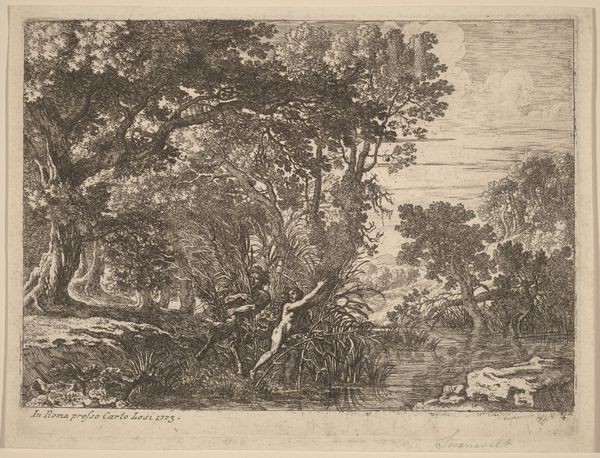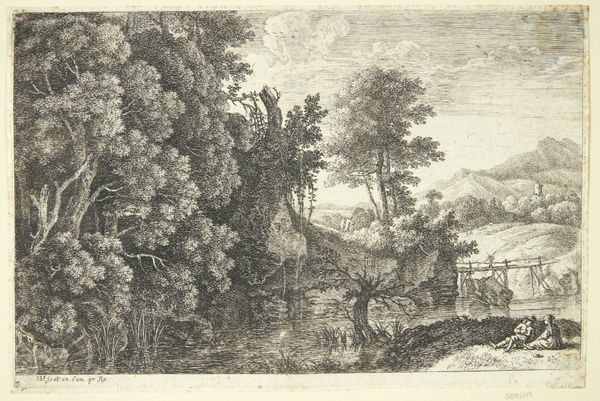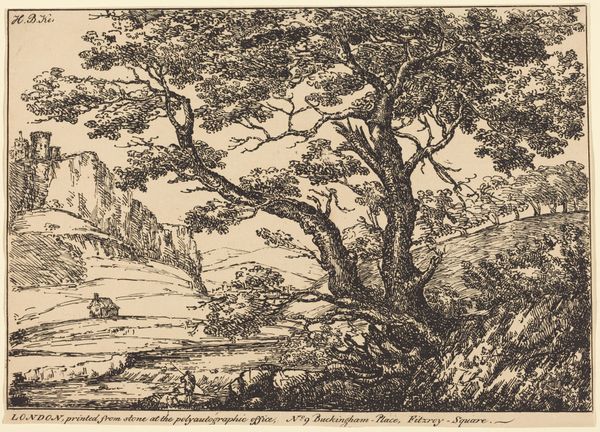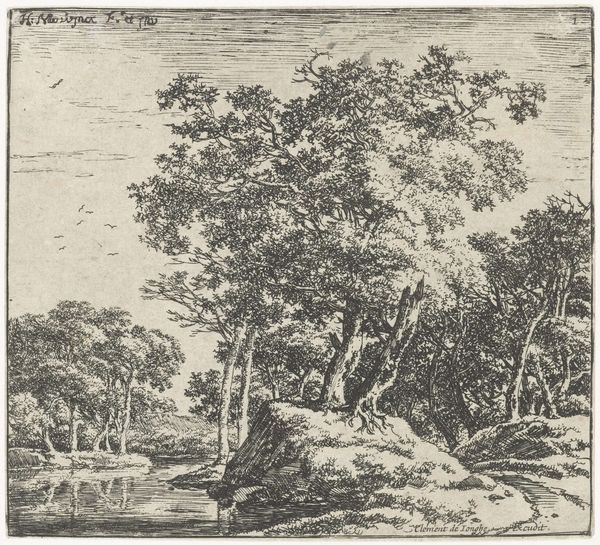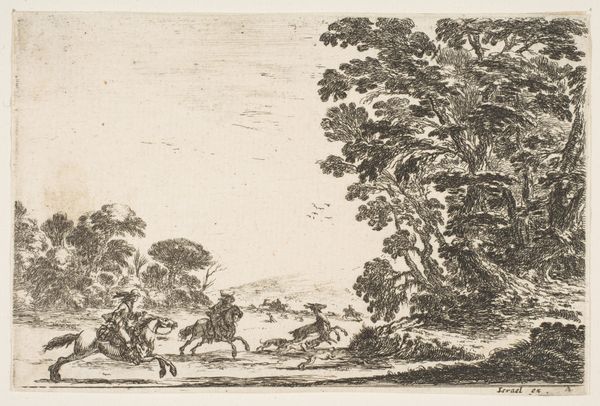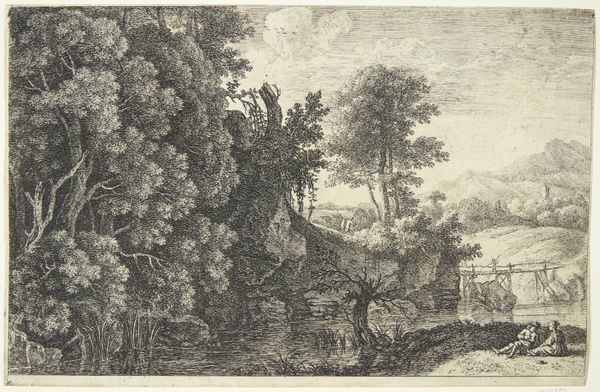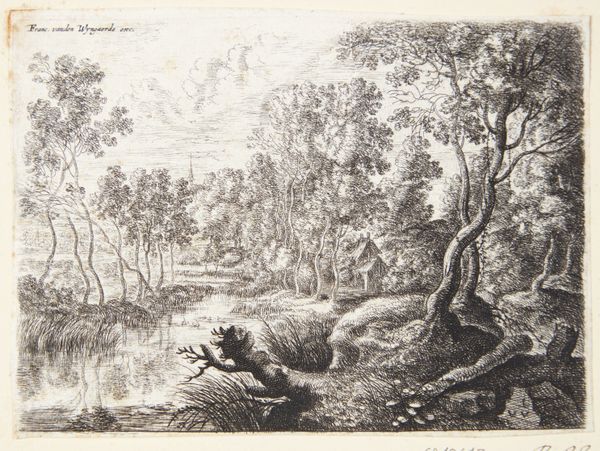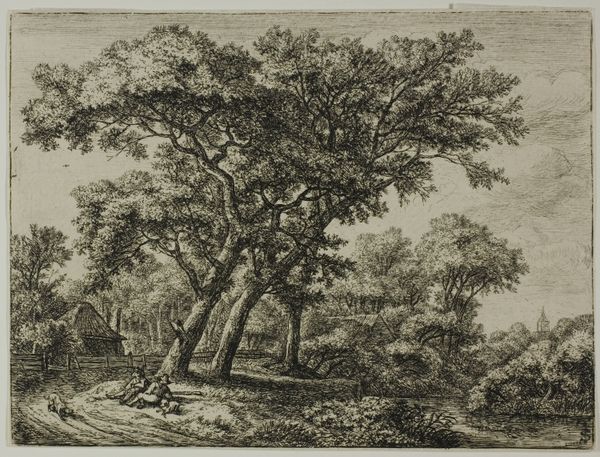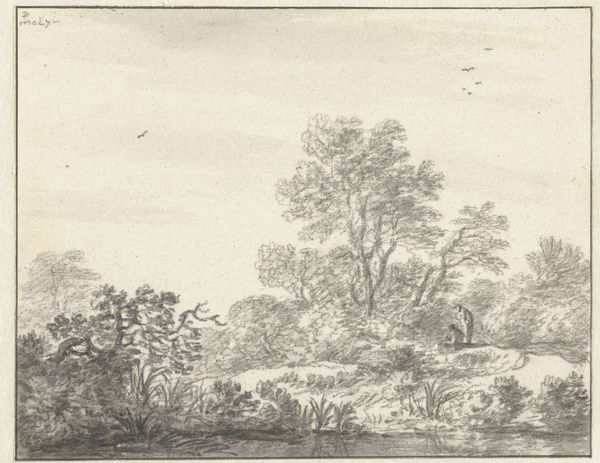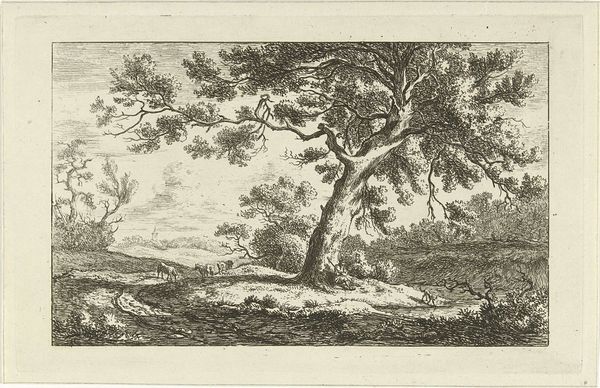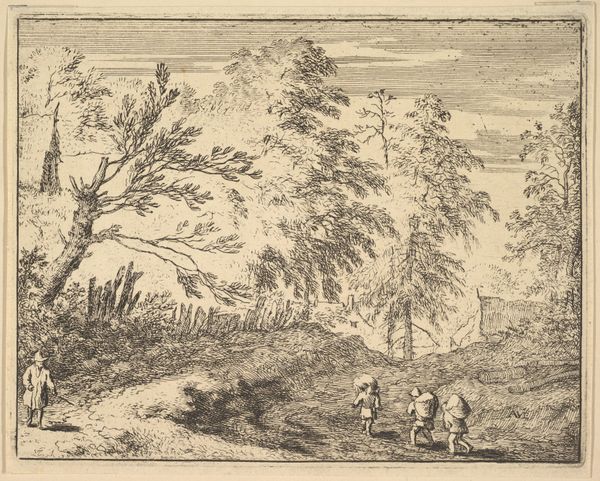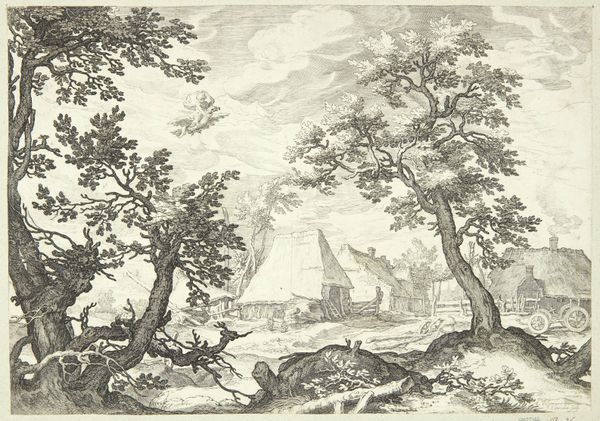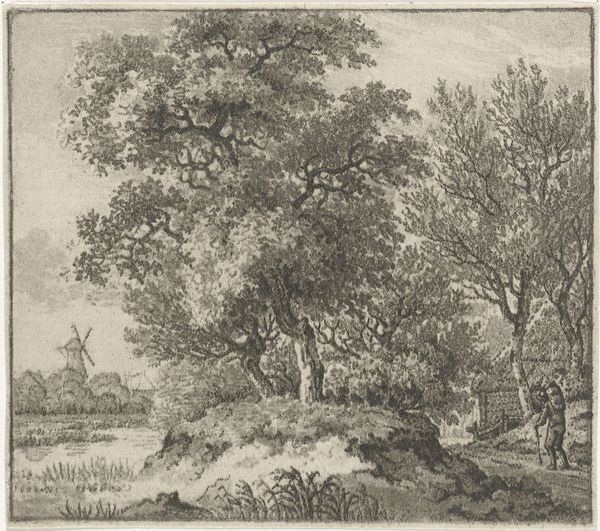
drawing, print, etching, ink
#
drawing
#
ink drawing
#
narrative-art
#
baroque
#
ink painting
# print
#
pen sketch
#
etching
#
landscape
#
figuration
#
ink
#
history-painting
Dimensions: 145 mm (height) x 205 mm (width) (bladmaal)
Curator: "Pan og Syrinx," a Baroque etching and ink drawing made sometime between 1603 and 1655, greets us. What strikes you about it? Editor: I find myself pulled into this scene—it's turbulent, charged. The chase is so immediate. There’s a claustrophobia in how dense the foliage is, closing in. Curator: Absolutely. It's brimming with urgency, captured masterfully in simple ink. The piece depicts the mythological story of Pan, the god of the wild, pursuing the nymph Syrinx. Editor: It is a frantic ballet! See how Syrinx is practically mid-leap? And Pan…that lustful glint practically jumps off the page. What symbols are screaming to you? Curator: Beyond the obvious—Pan's horns and Syrinx's desperate flight, I find myself captivated by the reeds. In Ovid's telling, Syrinx transforms into reeds to escape Pan. So the entire landscape, pregnant with potential, becomes symbolic. Editor: Transformation is a great insight, and in the drawing itself—do you see that the artist renders the figures with bold strokes, yet the landscape is so finely detailed? To me, it speaks of the animal versus the ethereal, where nature almost overwhelms them. Curator: That detail adds a lot, definitely, and hints at nature's indifference, if not outright support for Syrinx, of course. And you know, it's unsigned, making it more evocative somehow, like a primal scream etched into paper, no name attached. Editor: Right, that raw energy remains untamed by authorial ego! So the ink embodies it and almost renders an iconic fable. It gives a great snapshot of humanity at odds with desire and the wild world. Curator: So well put! For me, lingering on those reeds – a silent symphony poised to outwit the lecherous Pan. Editor: I shall forever read them now, for more than reeds, and instead whispers from nature and a brave young nymph, forever free from chase.
Comments
No comments
Be the first to comment and join the conversation on the ultimate creative platform.
